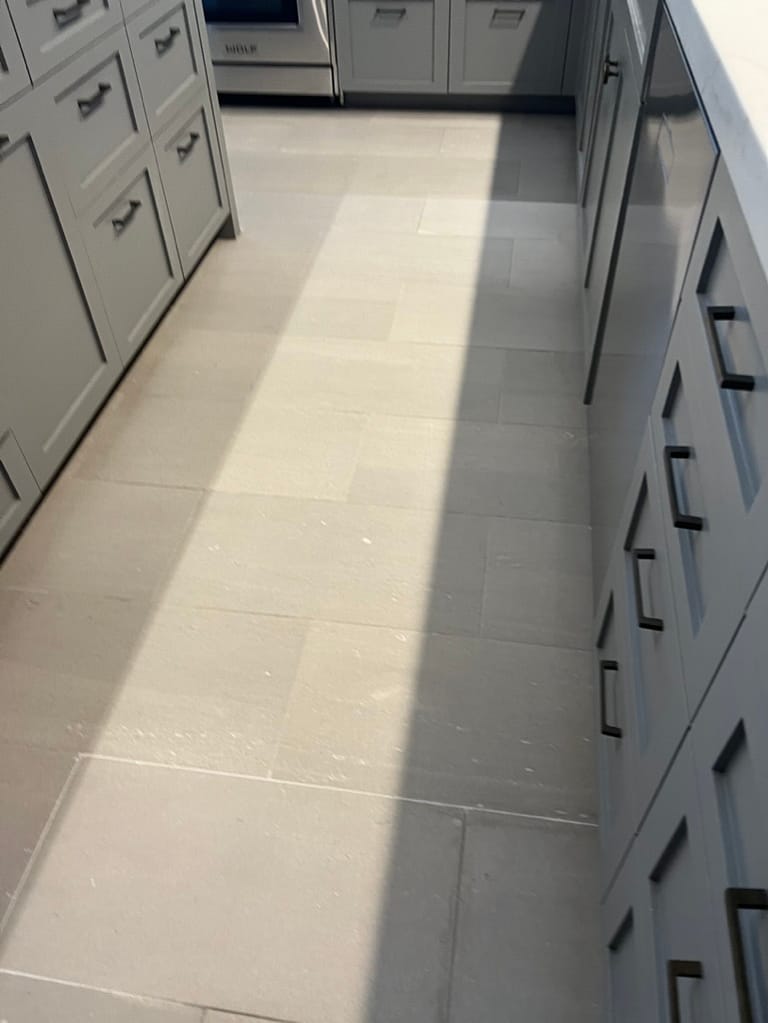Honed vs. Polished Marble
At JK Marble Maintenance, we’ve restored and maintained marble surfaces in Los Angeles for years.
We understand the nuances of each finish and want to help you make an informed choice that suits your lifestyle and aesthetic preferences.
Honed Marble:
Honed marble boasts a smooth, matte, or satin finish with minimal shine. This finish is achieved by grinding the marble surface to a flat, even plane, but not to the point of high reflectivity. The honing process results in a surface that is:
Natural and understated: Honed marble offers a more casual and natural look, showcasing the stone’s inherent color and veining without the high gloss.
Slip-resistant: The matte surface provides better traction underfoot, making it a safer choice for high-traffic areas, bathrooms, and kitchens where spills occur every day.
Scratch-resistant: While not impervious to scratches, honed marble is more forgiving than polished marble. Minor scratches are less noticeable due to the lack of reflection.
Porous: Honed marble is more permeable than polished marble and requires frequent sealing to protect it from stains and moisture damage.
Easy to maintain: Although sealing is more frequent, day-to-day cleaning is relatively simple. Regular sweeping and mopping with a pH-neutral cleaner are usually sufficient.
Ideal for: High-traffic areas, bathrooms, kitchens, flooring, countertops (especially in busy households), and areas where a more natural, understated aesthetic is desired.
Polished Marble:
Polished marble has a high-gloss, reflective surface achieved through extensive grinding and buffing. This process creates a surface that is:
Luxurious and elegant: The high shine reflects light beautifully, creating a sense of spaciousness and elegance.
Stain-resistant (to a degree): While not wholly stain-proof, the polished surface is less porous than honed marble, offering some resistance to staining. However, spills should still be cleaned promptly.
Susceptible to scratches: The highly reflective surface readily shows scratches and etches, making it less suitable for high-traffic areas or areas prone to spills and scratches.
Requires less frequent sealing: Polished marble requires less frequent sealing than honed marble due to its lower porosity.
More maintenance to keep the shine: While sealing is less frequent, maintaining the high gloss requires more diligent cleaning and care.
Ideal for: Low-traffic areas, formal living rooms, dining rooms, feature walls, vanities, and areas where a luxurious and dramatic look is desired.
It is not recommended for high-traffic floors or kitchen countertops due to its susceptibility to scratches and etching.
Serving

Honed vs. Polished Marble: Pros and Cons
| Feature | Honed Marble | Polished Marble |
|---|---|---|
| Appearance | Matte, smooth, natural, understated | High-gloss, reflective, luxurious, elegant |
| Slip Resistance | Excellent | Poor |
| Scratch Resistance | Good (scratches less noticeable) | Poor (scratches highly visible) |
| Stain Resistance | Lower (more porous) | Higher (less porous) |
| Maintenance (Sealing) | More frequent | Less frequent |
| Maintenance (General Cleaning) | Easy | Requires more care to maintain shine |
| Ideal For | High-traffic areas, bathrooms, kitchens, flooring | Low-traffic areas, formal rooms, feature walls, vanities |
| Overall Durability (Long Term) | Generally more durable in high-traffic | Prone to wear in high-traffic |

